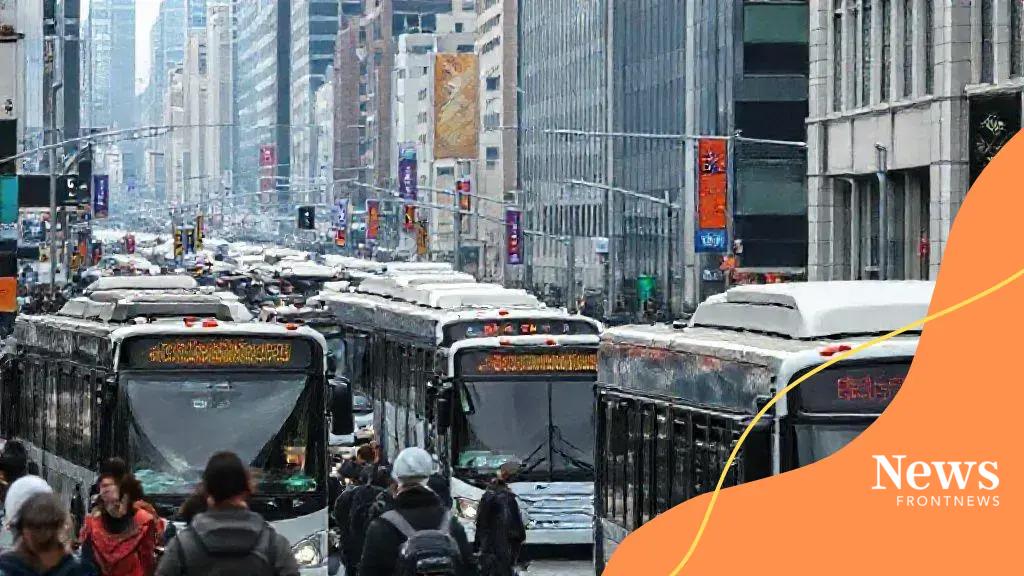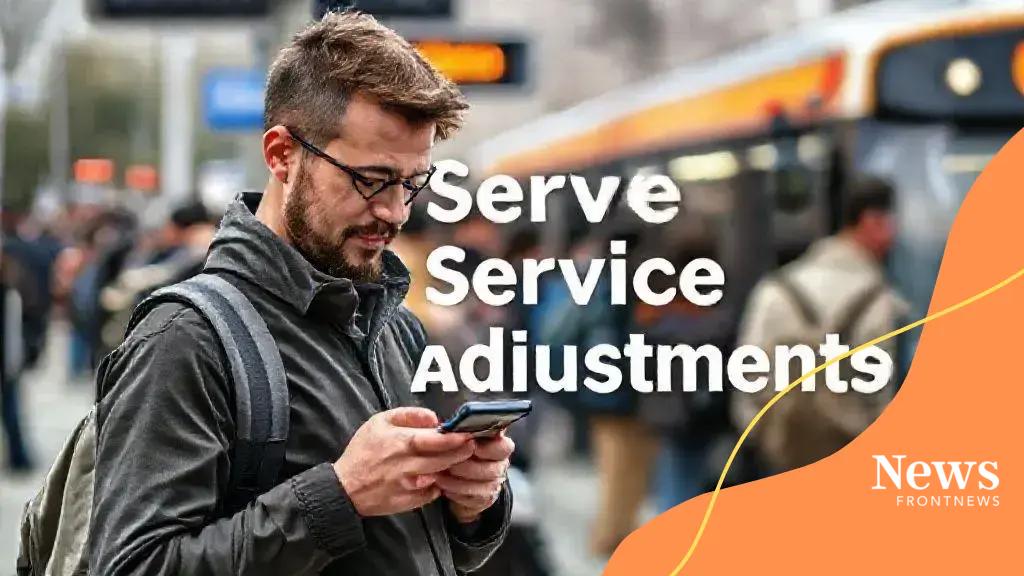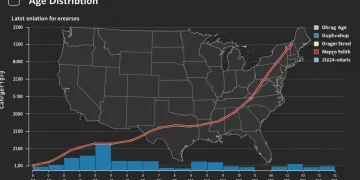PublicTransitUpdates: Get the Latest on Your Commute

PublicTransitUpdates inform commuters about fare changes, service adjustments, and future improvements, ensuring that local transit systems effectively meet community needs and enhance rider experience.
PublicTransitUpdates are crucial for anyone relying on public transport. Have you ever wondered how a simple service change can impact your daily commute? Let’s dive in and explore these updates together.
Key highlights of recent public transit changes
Recent updates in public transit greatly impact riders. Understanding these changes can help you navigate them smoothly and improve your commuting experience.
Fare Adjustments
One of the most significant changes in recent times is the adjustment in fare structures. Many transit authorities have re-evaluated their pricing models to ensure sustainability and affordability. These adjustments often aim to balance operational costs while staying accessible to the public.
- Introduction of new fare categories.
- Discount options for seniors and students.
- Changes in monthly pass pricing.
Service Frequency
Service frequency has also seen alterations, focusing on meeting commuters’ needs. Public transit systems are now adjusting schedules based on rider demand, resulting in more timely arrivals and departures. Enhanced service during peak hours is critical for accommodating the influx of daily travelers.
These improvements can significantly reduce waiting times and ensure a smoother journey. Commuters should stay informed about the new schedules to take full advantage of these changes.
Accessibility Features
There’s an ongoing commitment to improving accessibility across transit systems. Recent updates often include< strong>better facilities for disabled riders. From ramps to audible announcements, these changes aim to create a more inclusive environment.
- New boarding machines.
- Improved station signage.
- Enhanced seating arrangements.
Communication and Feedback
Lastly, public transit agencies have enhanced communication channels to gather feedback from riders. Open communication helps understand community needs and address concerns effectively. Transit updates are now often available through mobile apps and social media platforms, making it easier for you to stay informed.
The changes aim not just to maintain but to improve the overall experience of every rider. Staying informed about these shifts is vital to adapting quickly and efficiently to the public transit landscape around you.
Understanding fare changes and their implications
Understanding fare changes is essential for every commuter. Recent adjustments can affect your wallet and travel plans. It’s vital to stay updated on how these changes impact daily travel.
Why Are Fare Changes Necessary?
Fare adjustments often result from economic factors. Transit systems must keep up with rising operational costs like maintenance and fuel. Increased demand for public transportation also drives the need for fare reviews. These adjustments help maintain service quality and ensure systems remain operational.
- Economic inflation.
- Rising operational costs.
- Need for improved services.
Types of Fare Changes
Fare changes can take several forms, including new pricing structures, discounts, or even fare freezes. Understanding these changes is crucial for budgeting your travel expenses. For example, some transit authorities may implement a tiered pricing model, where frequent users benefit from lower rates.
In some areas, fares may rise for peak travel times but remain steady during off-peak hours. This system can help manage crowding while rewarding those who travel during less busy times.
Impacts on Commuters
When fares change, it’s essential to consider how it affects your daily commute. Higher fares might challenge some commuters, especially those living on a tight budget. Be mindful of discount programs available for students, seniors, or low-income individuals.
It’s also important to recognize that improved services may accompany fare increases. Extra buses or expanded service times often mean a better commute experience overall. So, while you may pay more, the return in service quality can be worth it.
Staying informed about fare changes can help you plan your trips better. When the transit authority announces updates, review how these will affect your usual routes and schedules. Being proactive will allow you to adjust without unnecessary stress.
How service adjustments impact daily commuters

Service adjustments can significantly influence daily commuters. Changes might mean alterations in schedules, routes, or even the frequency of transportation. These factors play a vital role in how you plan your day.
Changes in Schedules
When public transit authorities adjust their schedules, it affects when buses or trains arrive. Timely arrivals are crucial for commuters to reach their destinations on time. If a bus that usually arrives every 15 minutes is now scheduled for every 30 minutes, that delay can throw off an entire morning routine.
- Potential increased wait times.
- Impact on plans and responsibilities.
- Adjustments needed for connecting transportation.
Route Modifications
Sometimes, routes may change to better accommodate demand or ongoing construction. While these changes can improve accessibility, they can also lead to confusion for riders. A common challenge is ensuring you know the new stops or changes to familiar routes, which may require additional planning to avoid delays.
Being aware of these adjustments helps commuters adapt swiftly and lessen stress. Knowing your alternatives allows for a smoother journey.
Frequency of Service
Alterations in the frequency of service can have a profound effect on daily commutes. During busy hours, increased frequency can help alleviate crowding. On the other hand, if service is reduced, more individuals may find themselves waiting longer in line or packed in vehicles. This can lead to frustration and delays.
However, improved service frequency during peak hours can result in faster travel times and enhanced satisfaction for daily riders. Commuters often appreciate quicker journeys, especially if the adjustments lead to less congestion and reduced travel times overall.
Overall, it is essential for commuters to stay informed about service adjustments and how they impact travel routines. Keeping updated helps to navigate daily challenges effectively, ensuring a smoother and more enjoyable commuting experience.
Local transit authority responses to feedback
Local transit authorities often rely on feedback from riders to improve services. Listening to the community helps them understand what works and what doesn’t in public transit systems.
Channels for Feedback
Transit agencies provide various ways for commuters to share their thoughts. These channels may include surveys, public meetings, and social media platforms. Engaging with the community allows authorities to gather valuable insights directly from users.
- Online surveys for specific route feedback.
- Community forums to discuss issues and suggestions.
- Social media polls to gauge rider sentiment.
Implementing Changes
Once feedback is collected, local transit authorities analyze it to identify common themes. If many riders express concerns about delays on a particular route, for example, the authority will look into possible solutions. This process often includes adjusting schedules or adding more vehicles during peak times.
Improving communication about these changes is crucial. When riders see their feedback result in meaningful updates, it fosters a sense of community involvement. More importantly, it builds trust between the transit agency and its users.
Evaluating Impact
After implementing changes, transit authorities usually monitor outcomes to see if adjustments make a difference. By analyzing ridership data and gathering additional feedback, they can continually refine services. This ongoing process is essential for ensuring that public transit meets the needs of the community.
Commuters play a vital role in shaping local transit systems. Their input directly influences decision-making and ensures services align with the needs of the public. Recognizing this influence helps motivate authorities to maintain open lines of communication and respond effectively.
Future plans for public transit improvements
Future plans for public transit improvements are essential for keeping pace with community needs. Local transit authorities are continually assessing how to enhance services for all riders. By planning ahead, they can create a more efficient and user-friendly experience.
Expansion of Transit Services
One of the primary goals of transit authorities is to expand service areas. This includes adding new routes that connect underserved communities to major employment centers. Improving accessibility for everyone helps ensure that transportation is available to all residents.
- New bus routes targeting underrepresented areas.
- Extension of current lines to serve new neighborhoods.
- Collaboration with local businesses to enhance access.
Upgrading Infrastructure
Another critical aspect of future plans involves upgrading existing infrastructure. This includes modernizing bus stops, train stations, and transit hubs. When facilities are clean, safe, and well-lit, they encourage more people to use public transportation.
Transit authorities are also exploring ways to implement eco-friendly technologies. This can include electric buses and solar-powered shelters, which contribute to a greener environment while enhancing commuter comfort.
Integrating Technology
As technology continues to evolve, so do the opportunities for public transit improvements. Many agencies are investing in mobile applications that make it easier for riders to plan trips, purchase tickets, and receive real-time updates. These tools can significantly enhance the commuter experience by providing access to the information needed to navigate public transit effectively.
Furthermore, improved data analytics can help authorities make informed decisions based on ridership patterns. When agencies monitor which routes are most popular, they can allocate resources more efficiently, ensuring that services meet demand without overspending.
Planning for the future of public transit not only involves physical improvements but also community engagement. By regularly consulting with riders, authorities can tailor their improvements to better serve the population. Engaged communities can lead to enhanced public support and increased ridership, making transit systems more viable for years to come.
FAQ – Frequently Asked Questions about Public Transit Updates
What are the recent fare changes in my area?
Fare changes vary by location, but many transit authorities are adjusting prices to balance operational costs and improve services. Check your local transit authority’s website for specific details.
How can I provide feedback on public transit services?
Local transit authorities offer various channels for feedback, including online surveys, public meetings, and social media. Your input is valuable and directly influences service improvements.
What improvements are being planned for public transit?
Future plans often include expanding service routes, upgrading infrastructure, and implementing new technology for better rider experience. Stay updated through your local transit agency’s announcements.
How are community needs considered in transit planning?
Transit authorities regularly engage with the community for their input, ensuring that services match the needs and preferences of local riders. Public feedback sessions play a crucial role in this process.





